Cliffe Castle, West Yorkshire: A French-inspired vision of comfort and glamour
A Yorkshire mill-owner and merchant created a flamboyant and cosmopolitan home, as Jeremy Musson explains.

Describing the Yorkshire home of wool-spinner and worsted merchant Henry Butterfield in December 1884, the Weekly Telegraph reported: ‘It would be difficult to point out a mansion in this country where such a costly and magnificent display of English and Continental decorative furnishings exist. For comfort and sumptuousness the interior is even more than the most fastidious could wish for.’
This house, Cliffe Castle in West Yorkshire, became Keighley Museum in 1959, but much of its Victorian domestic magnificence can still be experienced and enjoyed, thanks to judicious acquisitions, generous bequests from the builder’s great-granddaughter, Lady Rozelle Raynes, and loans from the V&A. Indeed, it is a story that is better told today than it was in the 1950s and 1960s, when such Victorian work was considered monstrous fantasy.
Brilliantly fusing High Victorian ‘Jacobethan’ style architecture with French-inspired decoration, the principal reception rooms at Cliffe Castle are revelatory. They form an enfilade: with a highly decorated music room, a small music drawing room where the audience sat for music room recitals, leading to the dining room and great drawing room with interiors by a M. Gremond and decorative paintwork by ‘Leroux’ of Paris, they show an international awareness reflective of the reach enjoyed by Yorkshire manufacturers through the export of their wares in the late 19th century.
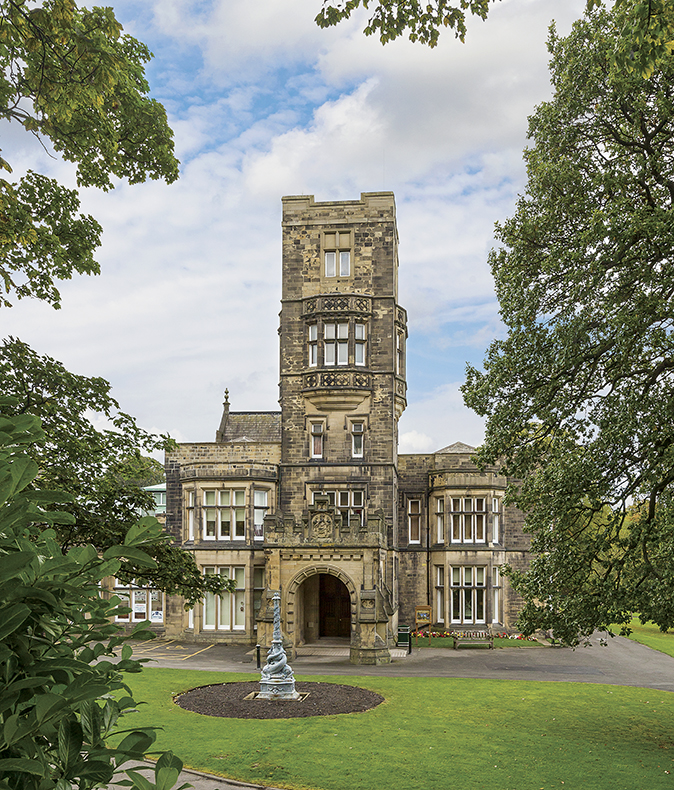
Local craftsmen were also involved with plasterwork in this grand suite of south-facing rooms by Benjamin Dixon of Bradford, following designs by Gremond, and elsewhere by Harlands and Son of Bradford. The stained glass on the stairs and in the entrance vestibule was by Powell Brothers and Sons of Leeds, but Italian paintings, Italian and French sculpture and French chandeliers all added richness to the domestic ‘Second Empire’-style fantasy.
Before he transformed Cliffe Castle – at an alleged cost of £130,000 – Butterfield was an ardent Francophile who initially ran the export side of the family business when he was based in America. In 1854, he married Marie Louise Roosevelt Burke, a member of the influential Roosevelt clan and they lived for a time in Paris, where they were received at the French Imperial court. Marie Louise died in 1867 and Butterfield inherited the 1830s-built Cliffe Hall (as it was then called) from his brother, William, in 1874.
Within a decade, he had completely transformed the building to designs drawn up by George Smith of Bradford (but finished by Wilson Bailey). When completed in 1884, the house resembled a small town with its three towers – including the ‘nursery’ tower – a billiard room, which read externally like a chapel, music saloon and winter gardens.

During his extensive travels, Butterfield kept notes on acquisitions and expenditure in a small pocketbook. The Russian malachite chimneypiece in the drawing room, for example, is from Prince Demidoff’s palazzo San Donato in Florence. Having left Cliffe Castle, the chimneypiece was bequeathed back, in 2016, by Lady Rozelle Raynes and the original French chandeliers were restored to the house in the 1980s.
Exquisite houses, the beauty of Nature, and how to get the most from your life, straight to your inbox.
Not every acquisition is documented, however, and the twin equestrian portraits, by Edward Boutibonne, showing Napoleon III in uniform, and the Empress Eugénie, which hang in the drawing room and dining room respectively, were presumably inspired by the period when Butterfield moved in the circles of the imperial court. It is thought these were acquired from the Tuileries after the exile of the Emperor.
Butterfield also wrote constantly with instructions for his son Frederick, who, in his 1927 memoir, recalled that ‘my best years for study were employed in representing my absent father and generally watching over his enormous expenditure at Cliffe Castle from 1875 to 1880’ and that his father resolved ‘to fill the new building with every costly detail his Parisian experience could suggest’. Numerous letters from father to son survive at Cliffe Castle.
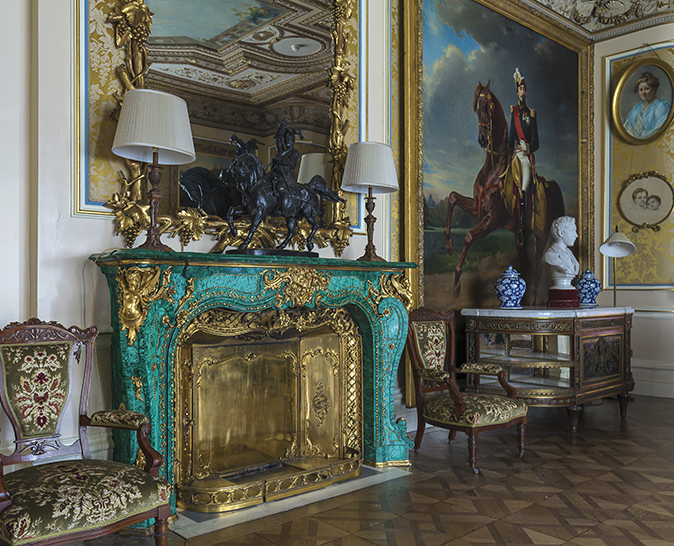
On July 18, 1877, for example, Butterfield asked Frederick to be sure to be at home as a Frenchman was due to come and install marble ‘chimney-mantel-pieces’ and ‘as he does not understand English, you must be there to translate for him’. There was a report in November of oil stains on the new chimney-pieces, after which Butterfield calls the workmen ‘idiots’ and wants them punished. Then, in a letter of March 28, 1878, Frederick was upbraided for not giving specific information about ‘the bedroom furniture you say is so handsome – but of which you omit to give me any details as to material, colour or pieces’.
Some of his errands were international. In October 1878, Butterfield asks his son to take a trip to see the Sicilian sculptor Civiletti about two busts ‘of the General and Charles’ (General Montauban and his son, who was marrying a Butterfield niece), to make sure that the Montaubans had sent photographs of their medals to the sculptor and then to ‘return via Florence & call on the painter Leopold Galli, 20 via S. Zenobi to see how the pictures he has on hand for me are being executed’.
Butterfield’s sense of pride in his work to the house is suggested by the fact he had every interior photographed. Many of these images were published, together with an illuminating essay by the museum’s director, Daru Rooke, in Cornucopia (2015).

These images show that the arches between the principal south-facing interiors were hung with heavy woven-silk curtain drapes.
The rooms could also be divided by mirrored screens, which pulled out from the walls. Each interior was hung in different coloured silk brocatelle (these are known to have been crimson and silver in the dining room and gold and white in the drawing room) and provided with an appropriate plasterwork frieze, such as ‘the Arts’ in the music room. A Gobelins tapestry, long since removed, was fixed in the dining-room ceiling. Specially woven Exhibition carpets with floral patterns and cavorting putti covered the floors.
The additional music saloon was like a great hall and approached via the winter gardens. It was designed by Bailey in the last phase of the works and treated partly as an art gallery, with some of the best paintings and cabinets displaying porcelain and glass once owned by Lord Byron and King Louis Phillipe of France. There was a stage for musicians and a proscenium arch decorated with scenes from Shakespeare by Butter- field’s favourite artist, Friedrich Steinhardt, who stayed at Cliffe Castle for long periods. The backdrop reproduced the view from another property owned by Henry Butterfield, the Villa Marianna, Cimiez, Nice.

Musical soirées were an important feature of entertainments here. Butterfield’s confidential secretary was an opera singer, Señor Edo Eugster y de la Dehesa, and Debussy’s favourite pianist, the young Ricardo Viñes, stayed often. Butterfield’s devotion to music is also suggested by his purchase of the death-bed of the composer Rossini, which he had installed in his own bedroom at Cliffe Castle.
An orchestra conducted by Sydney Taylor played at the grand ball given on the completion of works in 1884, which was described as ‘the sight of a lifetime’. The Weekly Telegraph correspondent described how the ‘animated and fashionable crowd’ enjoyed the winter garden, ballroom, library, billiard room, and ‘all the principal rooms of the Castle’ opened up. And there was no need for special decorations to be brought in, ‘the decorative style of each room being quite sufficient’.
Henry Butterfield, his wife and son are commemorated in stained glass in ‘Elizabethan’ dress on the main staircase. Other stained-glass portraits removed in the 1940s included family members and the French Imperial family.
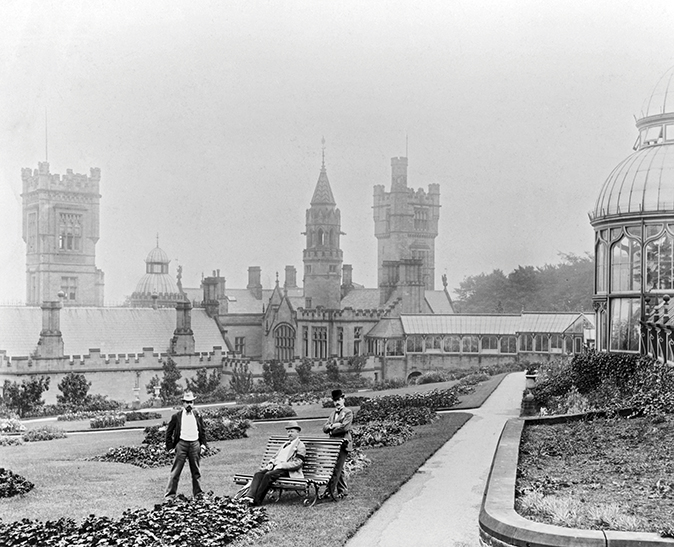
Butterfield died in 1910 and his son Frederick tempered the flamboyance of his father’s interiors, removing the carpets and the silk hangings, reducing the concentration of furnishings and introducing Georgian seat furniture in more sober taste. Several paintings by his daughter, Marie-Louise, capture the detail and atmosphere of Cliffe Castle in its time as her parents’ private residence.
In 1918, Marie-Louise married Capt Gervase Pierrepont, who became the 6th Earl of Manvers in 1943. Cliffe Castle was sold in 1950, with some of the contents moving to the Earl’s home at Thoresby and the rest being sold at auction. The house and gardens were acquired by the Keighley-born Sir Bracewell Smith, 1st Bt. He made his fortune in property development, building the Park Lane Hotel. A conservative MP, he also served as Lord Mayor of London. His gesture to his birthplace was generous, giving the house and grounds to the town. He engaged Sir Albert Richardson to adapt the house as a museum.
The early 1950s were not a period given to preservationism, especially where Victorian taste was concerned, and the alterations were extensive. The whole attic storey and the gables, which gave the roofline its characteristic form, were removed, as were two of the towers. This was unfortunate in terms of the architectural integrity of the place, as was the removal of the domestic quarters, which are such a rich part of the social history of such structures.

Sir Albert nonetheless became interested in the quality of the Victorian interiors and apparently persuaded his employer that some decoration, including stencilling, should be retained. Nevertheless, the chimney-pieces were removed and arches opened the principal rooms to the hall. He added the Regency-inspired octagonal galleried Bracewell-Smith Hall to the building. This is an important piece of architecture, recently refurbished and returned to Richardson’s original bold red-and-gold scheme.
The new museum, with the collections formerly shown at Victoria Hall in Keighley, opened in 1959 and will, next year, celebrate 60 years as a popular public museum and art gallery, free to all comers (with an average of 65,000 visitors a year).
Little survives today of the building’s Victorian park-style gardens. These were originally laid out by a surveyor called Murray and Butterfield’s head gardener, ‘Maltby’, who he sent to Paris, instructing his son to show him Versailles. Aspects of them have been restored with the support of a major Heritage Lottery Fund grant in 2017–18, including the reconstruction in simplified but highly effective form of the glasshouse complex.
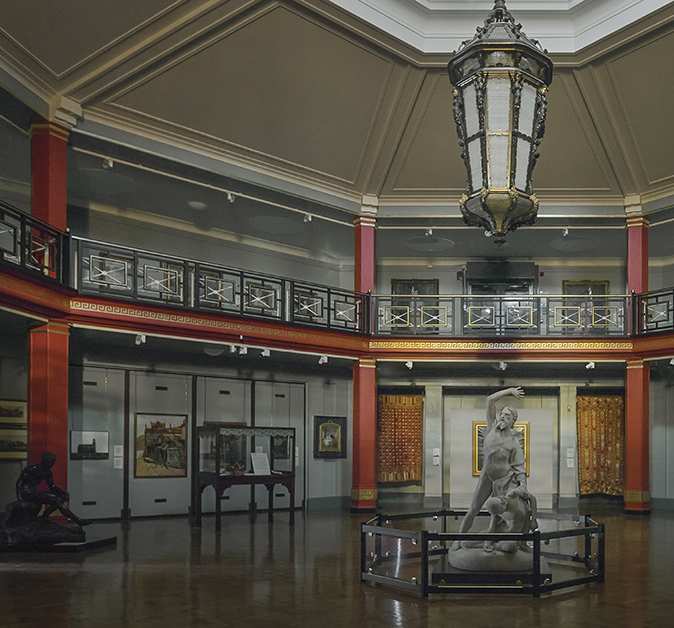
Cliffe Castle Museum holds collections that range from archaeology and natural history to local history. Nineteenth and early-20th-century art is happily well represented with works by Laura Knight and Henry Lamb and an extensive collection of stained glass. This includes early Morris & Co windows from Harden Grange in Bingley with windows by Burne-Jones, Morris, Prinsep, Hughes and Rossetti, which tell the story of Tristram and La Belle Isoude from the Morte D’Arthur.
The main reception rooms on the south front remain to conjure up the richness and French-Italian inspired tastes of Keighley’s most metropolitan mill owner, who created a house fit for music and laughter and who, as a handsome and rich young man, had danced with his pretty and fragile young wife at the elegant Court of Napoleon III. His vision of comfort and glamour lay rooted in those early happy years.
See www.bradfordmuseums.org for further information
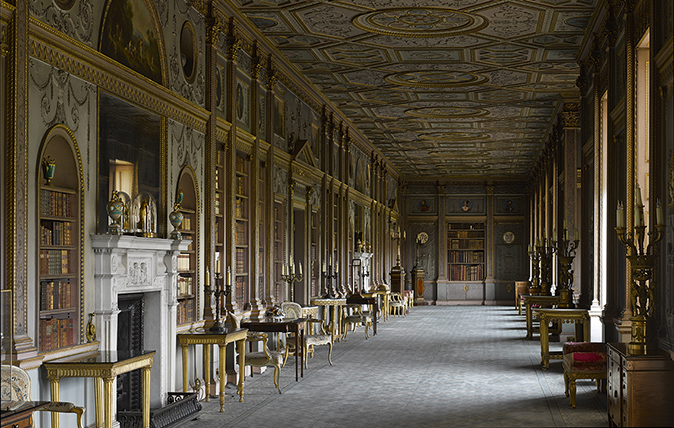
The Country House Library: Why these rooms and their collections need to be taken much more seriously
A new account of the country-house library will compel us all to reassess these rooms and their collections, says John

Orthopaedic shoe-making: The bridge between architecture and podiatry
John Goodall meets Bill Bird, who, having studied architecture at the Bartlett, now makes orthopaedic shoes.

Credit: UK Heritage Awards
Ten of the best places to visit in the UK, from top family day out to the place with the greatest loos
The winners of the 2018 UK Heritage Awards have been announced – these are the winners in the ten main categories.